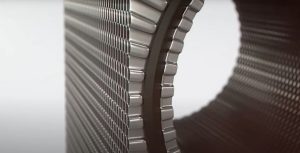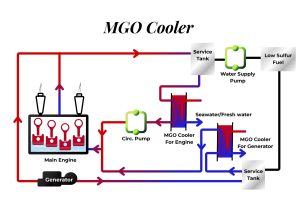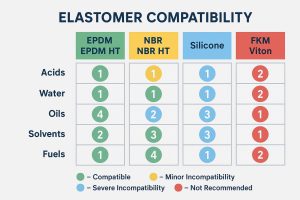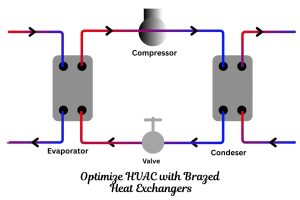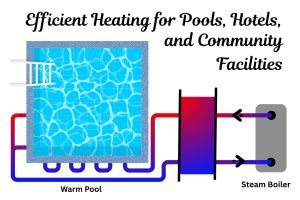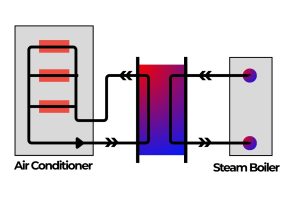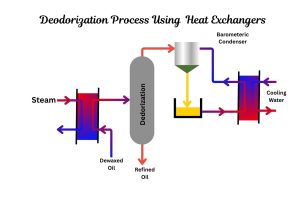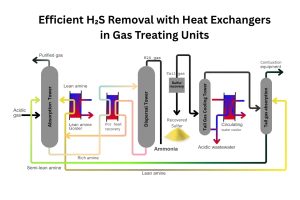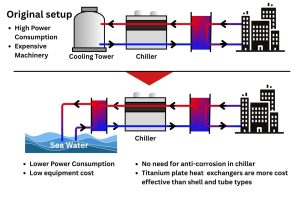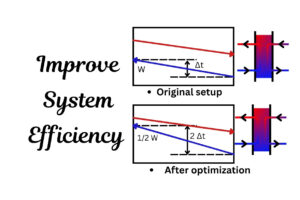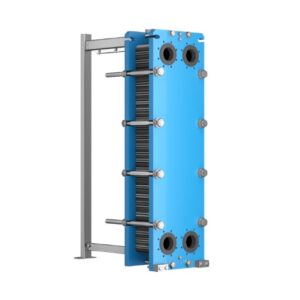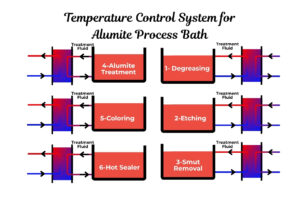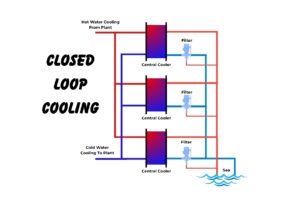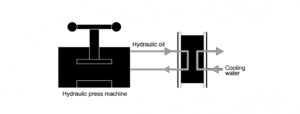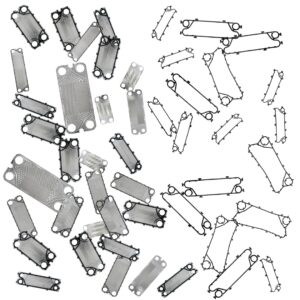Optimizing Heat Transfer Using Micro-Hole Cellular Structures for Efficient Thermal Management
In today’s fast-paced world, electronic devices are an integral part of our daily lives. From smartphones to high-powered computers, these devices generate substantial heat during operation. This heat needs to be effectively dissipated to ensure optimal performance and prevent overheating. Traditional cooling techniques, such as enhancing the surface-to-volume ratio of heat sinks or modifying the type of fluid circulating through them, have been widely explored. However, as electronic devices become more compact and powerful, new cooling technologies are being discussed within the scientific community to tackle these challenges more effectively.
How Can Heat Transfer be Enhanced in Modern Devices?
Researchers have been investigating various approaches to improve the thermal management of devices. One such method involves utilizing nanofluids. For instance, Rafati et al. [1] found that using alumina nanofluid at a 1% volumetric concentration led to a significant drop in the temperature of the processor, reducing it from 49.4°C to 43.9°C. Another study by Jajja et al. [2] examined different fin geometries in heat sinks using water as a coolant. They discovered that using a pin spacing of 0.2 mm resulted in a substantial reduction in the base temperature of the microprocessor, dropping it to 40.5°C under a 325 W heater power.
Moreover, studies have shown that cooling technologies, such as air-cooled mini-channel heat sinks, benefit from higher flow rates and base temperatures. These techniques have proven effective in maintaining optimal temperatures for processors, as evidenced by Mohammed and Abd El-Baky’s study [4], which observed a base temperature of 55°C at an inlet velocity of 11.1 m/s with 160 W of heat generation.
What Are Cellular Metallic Structures and How Do They Enhance Heat Transfer?
Cellular metallic structures, such as metal foams, have emerged as promising candidates for compact heat exchangers capable of dissipating high heat fluxes. These materials have ultra-light properties and high porosities, making them ideal for applications where space and weight are at a premium. Researchers have found that metal foams can dissipate heat up to five times faster than traditional pin fin arrays while being three times lighter [9-12]. However, the uniformity of temperature distribution and structural stability remain critical factors in their effectiveness.
Periodic cellular structures, in contrast to stochastic (random) structures, have shown better performance in maintaining a uniform temperature distribution. While stochastic structures are more capable of dissipating heat, periodic cellular structures tend to have superior load-bearing capabilities, which contributes to their reliability in high-performance applications [13]. Tian et al. [14] reported that brazed textile periodic structures provide three times the thermal efficiency of stochastic structures. The pressure drop in periodic structures is also lower, making them more efficient for various applications.
Can Micro-Hole Cellular Structures Provide Superior Thermal Management?
Micro-hole cellular structures, particularly those with 2-D void arrangements, represent an innovative approach to improving heat dissipation in compact spaces. These structures, typically fabricated with square or circular cross-sections, offer both high heat transfer and minimal pressure loss. This design ensures that the flow of coolant (usually water) is optimized for both effective cooling and minimal energy consumption.
In this study, a micro-hole cellular structure was used to assess its performance in water-cooled applications. Using computational fluid dynamics (CFD) simulations, the thermal and flow characteristics were analyzed, and the results were compared with experimental findings. The micro-hole cellular structure demonstrated excellent performance in terms of heat dissipation, with water efficiently transferring heat away from the base and lowering the overall base temperature of the system.
How Did the CFD Analysis and Experimental Setup Compare?
The numerical analysis used CFD software, ANSYS 16.0, to simulate the thermal performance of the micro-hole cellular structure. Assumptions included incompressible, turbulent, steady-state flow, with constant fluid thermal properties and no internal heat generation. The results from the CFD simulations were then validated through experimental testing.
During the experimental setup, the micro-hole cellular structure was subjected to a constant heat flux of 8.16 W/cm², generating 345 W of heat. Water was used as the coolant, with various flow rates (1, 1.5, and 2 Lpm) tested. The structure was manufactured using wire-cut electrical discharge machining, ensuring precise geometry. K-type thermocouples were employed to measure temperatures at various points, and a constant flow rate was maintained throughout the test.
The experimental and CFD results showed good agreement, with an 8.75% error observed in base temperature measurements. At the highest flow rate (2 Lpm), the base temperature was reduced to 29.7°C numerically and 32.3°C experimentally. This is a notable improvement compared to traditional cooling methods, which often struggle to maintain base temperatures below 40°C.
What Were the Key Findings from the Experimental Results?
The experimental results revealed several crucial insights into the performance of the micro-hole cellular structure:
- Pressure Drop: As the volumetric flow rate increased, so did the pressure drop across the structure. The minimum pressure drop was recorded at a flow rate of 1 Lpm, while the largest pressure drop occurred at 2 Lpm.
- Heat Transfer Rate: The heat transfer rate increased with higher flow rates, peaking at 332 W (numerically) and 314 W (experimentally) at 2 Lpm. This correlates with the reduction in base temperature and the increase in thermal efficiency.
- Thermal Resistance: Thermal resistance decreased as the volumetric flow rate increased, which is directly linked to the enhanced heat transfer rate. At the highest flow rate, thermal resistance was minimized, resulting in the best cooling performance.
How Does Heating Formula Contribute to Advancements in Thermal Management?
At Heating Formula, we specialize in providing high-quality heat exchanger materials, including advanced cellular structures such as those used in micro-hole heat sinks. Our products are designed to optimize heat dissipation, making them ideal for use in a wide range of industries, from high-performance computing to electronics and automotive applications. By offering innovative materials that improve convective heat transfer and reduce pressure losses, Heating Formula ensures that your devices operate efficiently and reliably, even under demanding conditions.
Conclusion: What Are the Implications for Future Thermal Management?
This study highlights the potential of micro-hole cellular structures for superior thermal management in modern electronic devices. By utilizing water as a coolant and optimizing the design of cellular materials, significant improvements in heat dissipation, pressure drop, and overall efficiency can be achieved. With ongoing research and advancements in materials and design, these structures promise to play a pivotal role in the future of thermal management.
Incorporating cutting-edge materials like those offered by Heating Formula ensures that electronic devices can meet the growing demands of performance while maintaining safe operating temperatures. As the need for better heat management solutions continues to rise, our products are designed to meet the evolving needs of the industry.

